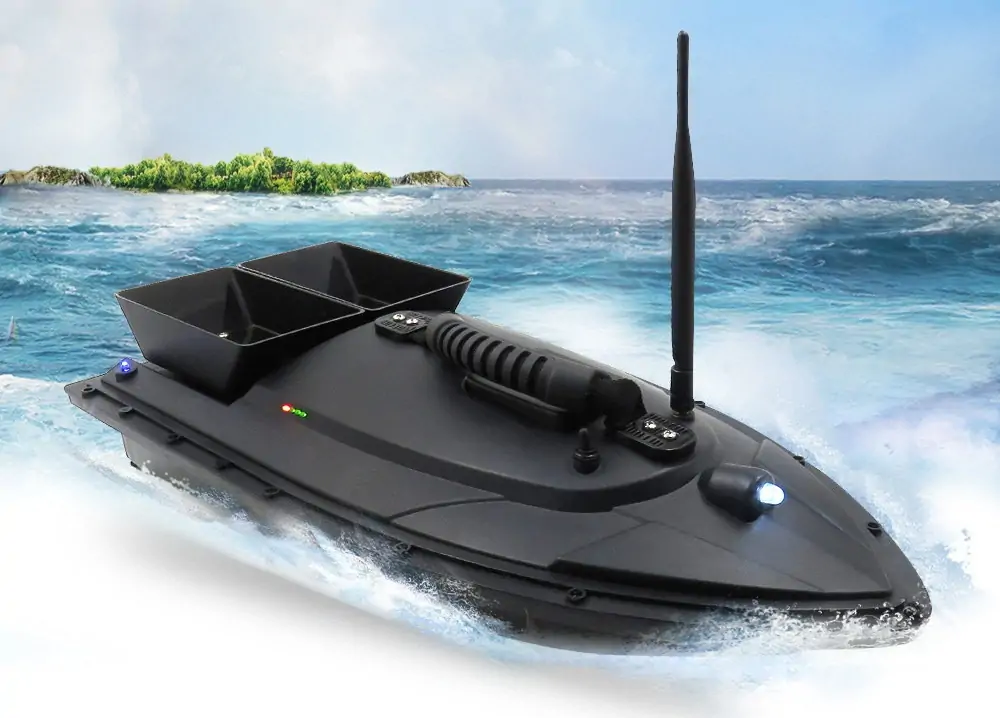 |
Welcome To Evlithium Best Store For Lithium Iron Phosphate (LiFePO4) Battery |
 |

Owning a fish finder that locates underwater schools using reflected sound energy significantly enhances the fishing experience. However, ensuring a reliable power source for it is crucial. If you're seeking the optimal fish finder battery, you've come to the right place. Even if you're uncertain about the specific battery required for your fish finder, we've got you covered!
This guide will explore various power options for fish finders and offer our top recommendations. Our chosen fish finder battery is secure, easily transportable, and extends your time on the water.
Typically, fish finders utilize either 12V lead-acid or lithium batteries. While lead-acid has been the conventional choice for many years, an increasing number of fish finders now come equipped with lithium batteries. Additionally, there are portable battery alternatives available for powering your portable fish finder, such as the Battle Born 50ah Kayak Kit.
If you're operating a boat with its power system, it'll support both your boat and the fish finder. The built-in marine battery is an integral part of that setup. However, if you plan to venture out on a kayak or another boat without an electrical system, a separate battery becomes necessary.
In both scenarios, we advocate for lithium as the superior choice! Let's delve into the various battery types suitable for fish finders.
While any 12V marine battery can power your fish finder, we favor lithium-ion, as mentioned earlier. Nevertheless, let's examine both battery types to empower you in making an informed decision.
Sealed lead-acid marine batteries contain lead, lead dioxide, sulfuric acid, lead sulfate, and water. These deep-cycle batteries are standard for most boats and vehicles. They are cost-effective initially but have a shorter lifespan (typically 3-5 years with minimal maintenance) compared to other battery options.
Sealed lead-acid batteries are heavy, sustain damage if discharged below 50%, and typically endure only about a tenth of the lifespan of their lithium counterparts.
Lithium marine batteries are rechargeable power cells using lithium-ion phosphate as a power source, devoid of liquid or acid. Consequently, these batteries are lightweight, and you can mount them in any position. They've gained popularity in aerospace, military, and consumer industries, powering devices like laptops and cell phones.
One of the significant advantages of lithium-ion marine batteries is their lifespan, spanning between 10-15 years. Battle Born batteries, for instance, come with a 10-year warranty, showcasing our confidence in the product. There are several other advantages to using lithium that we'll explore further.
Lithium batteries stand out as the superior choice for powering various deep cycle applications, including fish finders. Here are some of the prime benefits of utilizing a lithium fish finder battery.
Lithium-ion marine batteries are notably lightweight; in fact, most weigh merely half as much as their lead-acid counterparts. This characteristic makes them easy to transport to and from your boat and even suitable for powering a trolling motor in kayaks alongside the fish finder.
Lithium batteries are safe and reliable. Comparatively, lead-acid batteries should not be discharged beyond 50% of their capacity, as doing so damages them, leading to eventual battery failure.
However, with a lithium battery for your fish finder, you can discharge it down to 20% of its capacity without harm. Most lithium-ion batteries feature a failsafe mechanism that registers the battery as depleted once it reaches 20% capacity, preventing potential damage. Essentially, you can discharge it to 100% without concerns.
Lithium batteries can charge up to four times faster than lead-acid batteries with the same charging current. This faster charging ability stems from their enhanced capacity to accept charge, owing to low internal resistance and the ability to charge at higher currents.
Since lithium batteries have low internal resistance and can handle higher currents, they efficiently absorb all the energy in a charging cycle, resulting in significantly faster charging compared to lead-acid batteries.
What Is the Lifespan of Fish Finder Batteries? If you opt for a lead-acid battery in your fish finder, anticipate replacing it within one to five years, depending on usage.
Lead-acid batteries typically endure between 500 to 1,200 charge/discharge cycles. However, their lifespan diminishes if discharged beyond 50% capacity or exposed to extreme temperatures.
Conversely, lithium-ion batteries can last ten times longer than lead-acid batteries, withstanding between 3,000 to 5,000 charge/discharge cycles. Additionally, lithium batteries are less prone to damage that could shorten their lifespan compared to lead-acid counterparts. For instance, worries about over-discharging a lithium battery are minimal.
When considering the choice between a traditional lead-acid battery and a lithium battery for your fish finder, marine lithium batteries undoubtedly emerge as the superior option.
They are lighter, potentially last up to ten times longer, can be utilized more frequently and efficiently, providing excellent long-term value. Moreover, you'll appreciate the consistent power supply and reliability offered by this product.
Edit by editor
All Rights reserved © 2025 Evlithium Limited